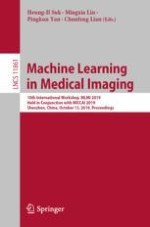2019 | OriginalPaper | Buchkapitel
Deep Residual Learning for Instrument Segmentation in Robotic Surgery
verfasst von : Daniil Pakhomov, Vittal Premachandran, Max Allan, Mahdi Azizian, Nassir Navab
Erschienen in: Machine Learning in Medical Imaging
Aktivieren Sie unsere intelligente Suche, um passende Fachinhalte oder Patente zu finden.
Wählen Sie Textabschnitte aus um mit Künstlicher Intelligenz passenden Patente zu finden. powered by
Markieren Sie Textabschnitte, um KI-gestützt weitere passende Inhalte zu finden. powered by
